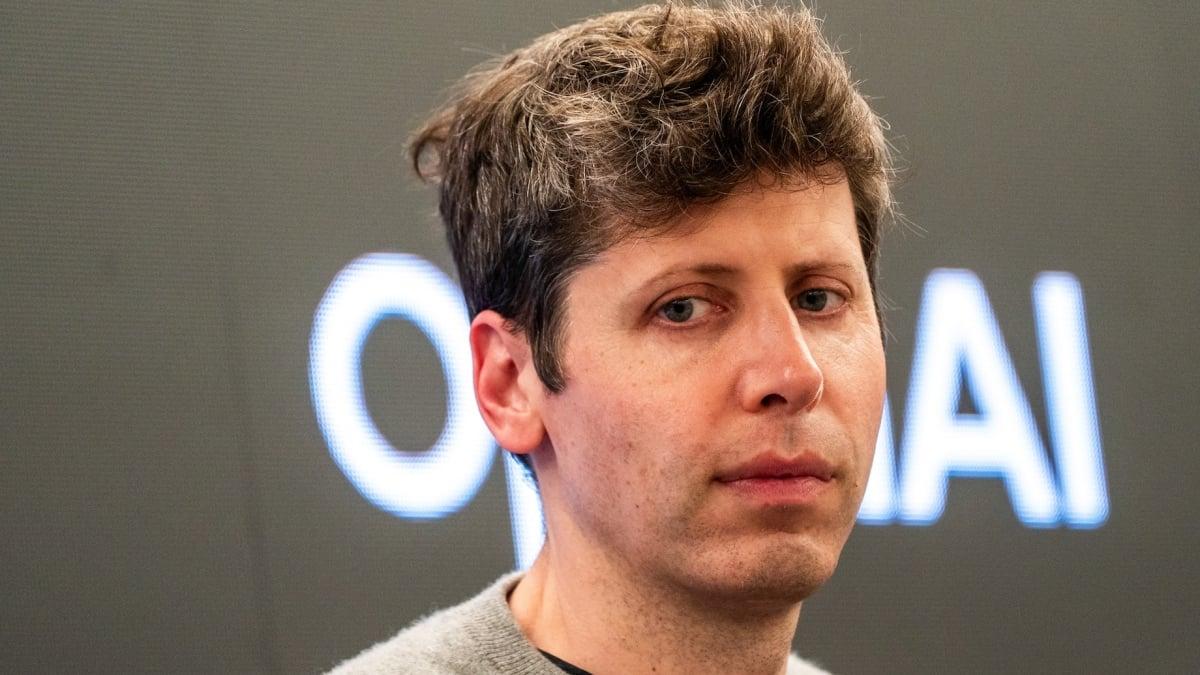Never mind the debate over whether OpenAI's GPT-5 release is disappointing, or whether it can revitalize the failing world of AI Agents. OpenAI CEO Sam Altman has already moved on — to releasing Sora 2, the next generation of its text-to-video engine. And to Sora by OpenAI, a new iPhone app that shot to #1 in the App Store Wednesday. Not too shabby, especially considering access to the Sora app is still invite only.
"Explore, play, and share your imagination in a community built for experimentation," the App Store description for Sora by OpenAI says. Essentially, OpenAI is about to enter the social media business the same way Facebook did — with a velvet rope around the service, and a cutting-edge feed within. OpenAI also highlighted how easy it is to insert yourself, your friends, and, well, deepfakes of just about anyone you want (including Altman, it turns out) in Sora's shortform videos.
But OpenAI is a little late to the social AI video feed app game. Since Character.AI launched Feed, which it called "the world's first AI-native social feed" in August, AI makers have begun what you might call the new pivot to video. Meta's Vibes arrived on the Meta AI app in September: Like Feed, like Sora, it's an endless scroll of shortform videos, under 10 seconds, from a creator community. (Midjourney has a similar AI video web feed, though no Midjourney smartphone app has dropped yet.)
In all cases you're invited to remix these videos and add your own. You're not invited to ask how sustainable these endless-scroll services are, given the still untold amounts of energy that every AI video creation eats.
Character.AI CEO Karandeep Anand put a spin on Feed worthy of Altman's brightest predictions: "The boundary between creator and consumer is disappearing," he wrote. Come for a traditional social media "lean-back experience," stay to create a "new epic adventure," Anand added. "Doomscrolling is dead. We're ushering in the future of AI-powered entertainment."
That's one way of putting it. Another is to say these companies are competing to build the most popular "infinite slop machine," to use one description of Meta Vibes. It isn't enough that social media services like Facebook are filled with AI-generated art of dubious quality; now we're about to be inundated with so much AI video slop they'll need apps of their own to contain the flow.
Which is the one AI video feed to rule them all?
Oceans of AI slop, ironically, could help our real-world oceans to rise. Video feeds like Feed, Sora, Vibes, and Midjourney require more than their fair share of data center usage — and for many data centers around the world, that means burning carbon in one form or another. That's why once-green tech giants like Google and Microsoft are quietly walking back their commitments to renewable energy.
Are we doomed to a different kind of doomscrolling, then? One where multiple endless-scroll feeds are lighting up our brains and stroking our egos by sticking virtual versions of us in them?
Mashable Light Speed
There is hope, however, that we're simply going through the part of the tech product cycle known as the Cambrian Explosion.
The original Cambrian Explosion, half a billion years ago, was a relatively tiny million-year chunk of evolutionary time. During that period, most of the major forms of life on Earth that we know today emerged — in large part because they had eyes to see. It was followed by an extinction event — a crash in the levels of atmospheric oxygen that ended many species.
Likewise, we've seen this movie before in the tech world, where one product sucks all the oxygen out of the room.
There was a Cambrian Explosion of personal computer operating systems in the early 1980s. Microsoft Windows won in the early 1990s. Apple's MacOS barely survived, even though it was widely judged to be better-designed software. Users simply wanted what everyone else was using. (Even now, MacOS barely has a 15 percent market share; Apple got where it is now by dominating the smartphone market instead.)
The proliferation of search engines in the 1990s — remember Alta Vista and Ask Jeeves? — very quickly gave way to Google standing alone in the 2000s. Why? Because users simply wanted the search engine with the best secret sauce, which turned out to be PageRank.
We've also seen this movie in the social media world itself. Friendster and MySpace were part of the Cambrian Explosion of the 2000s; when the smoke cleared in 2010, Facebook was on top. The network effect kicked in. You were on Facebook because everyone else was on Facebook.
It's way too soon to judge which AI video feed will win the coming war, and not just because barely anyone can use the Sora app yet. OpenAI, Character.AI, Meta, or Midjourney are all taking slightly different approaches to video presentation and remixing, with different LLMs underpinning them.
The one with the better technology may not be the same one that wins all the users. You can have the best AI video in the world on Sora, for example, but if the world is flocking to Vibes, no one's going to see it.
But tech history — not to mention the financial cost of data center usage, which is why OpenAI has burned through more than $250 million in operating costs this year already — tells us this Cambrian Explosion won't last long. Collectively, eventually, users will choose one Infinite Slop Machine to rule them all.
And for the sake of the planet, and our survival on it, we'd better choose sooner rather than later.



